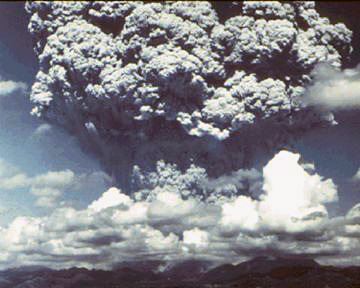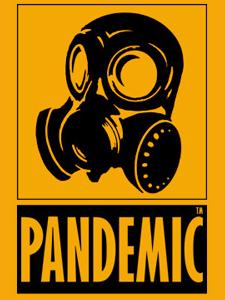Tag Archives: Megastore
IF YOU THOUGHT ZOMBIES WHERE TOUGH – Try Surviving Yellowstone’s super volcano
For preppers, it’s the ultimate end game: surviving the eruption of Yellowstone’s super  volcano.
volcano.
While some folk worry about an asteroid strike bringing about the end of the world as we know it, as scientists say it did for the dinosaurs 65 million years ago, North America is actually sitting on its own extinction-level event waiting to happen.
“Everything would be wiped out; it would take years for the climate to recover and decades for the rivers to clear up because everything would be choked with volcanic ash for a wide area around the eruption site,” said Kelly Russell, professor of volcanology at the University of British Columbia. “The southern latitudes of Alberta, Saskatchewan and Manitoba would all see ash cover, how thick it would be depends on the winds and the amount of magma.”
Russell stresses that such super eruptions are extremely rare — the last one happened before human civilization — but that they can and do happen, and Yellowstone, in Yellowstone National Park in Wyoming, is an active field that has seen three massive eruptions.
He compares Yellowstone to Mount St. Helens in Washington state in 1980.
“It produced one cubic kilometre of magma, and we saw ash fall from it in southern B.C., a small amount, but it was there, and when we look at the very largest eruptions that have taken place at Yellowstone, they can spew out a thousand cubic kilometres, so that’s a thousand times larger than the Mount St. Helens eruption that’s in everybody’s minds.”
Russell points out that two feet of ash from the Crater Lake eruption in Oregon 7,700 years ago can be found in Oliver, B.C., and in the banks of the Bow River in Calgary. He says if Yellowstone cuts loose, the southern Canadian prairies could get covered in many feet of ash, and the American states closest to Yellowstone would be smothered with an even thicker layer of the sterile rock powder, killing off livestock and leaving them unable to grow food.
“The ash is terrible, take a window and grind it into a coarse flour, then breath that in, it does terrible things to the human body. It would be important to have masks and filters, if you were trying to survive it,” Russell said. “The United States would stop being a food-exporting nation and starting being a food-importing nation.”
Yellowstone’s volcano doesn’t have the classic menacing cone shape, so many people don’t know that a magma chamber bigger than New York City lies beneath the steaming surface.
640,000 years ago, animals similar to elephants, rhinoceroses and zebras roamed the plains of the United States when Yellowstone blew — and it took out the animals and every other living thing that couldn’t fly away from the blast.
Scientists estimate Yellowstone’s volcano explodes every 600,000 to 700,000, and some say the time could be coming for another eruption. If it blows, the chances of survival sound bleak, but that’s not stopping some survivalists from preparing.
“Some people who visit there say there are more hot springs popping up there, and there is more of a sulphur smell that’s stronger than ever. You take from it what you want and I just pay attention to it a little more than the average person, just in case,” said Jason Charles, a firefighter in New York City. “I don’t want it to be a curve ball we don’t see coming. I keep it in the back of my head.”
Charles was a paramedic on 9/11 and saw thousands of people struggling to breath through the toxic dust. He has special dust and ash filters for his gas mask in case of another NYC disaster, or if Yellowstone blows.
“I know some people who have bought UV lights, in case they need to grow their own food – but that’s also assuming that the power grid stays up, but then there’s a space issue, how much could you grow?” he said. “It’s better to store food that will last.”
Charles has a one-year supply of food for his family, including his wife and four children. Meal-ready-to-eats (MREs), canned pasta and lots of canned fruit are stuffed into his apartment and his storage locker. He prepares for all sorts of disasters because he says no one should depend on the government to save them.
“The government couldn’t handle (Hurricane) Katrina. Compared to Yellowstone, Katrina was a drop in the bucket,” he said. “I have always heard as a rumour, they would wait for the masses to die and whatever survivors are left, that’s who they’d take care of, because they can’t take care of hundreds of millions of people we have living here in the United States.”
Jake Lowenstern, a geologist with the U.S. Geological Survey, is the guy in charge of the Yellowstone volcano observatory.
“Worst-case scenario, a super eruption is a thousand cubic kilometres of material gets sent out of the magma chamber. When that happens it’s going to send out a lot of ash, and it circles the globe and changes the climate for years, drops the temperature for a few years,” Lowenstern said.
He said while a super eruption is highly unlikely, and even if it does happen not many would survive, it doesn’t hurt to prep.
“Things you can do to prepare for one kind of disaster are useful for any kind of disaster: lots of food, water, medical supplies and batteries on hand, and for an eruption, add good masks, air filters and weather stripping to keep the ash out of homes.”
Massive eruptions of the past:
— Archeologists say human beings barely survived the last super eruption on Earth. 74,000 years ago, Toba blew up on the Island of Sumatra. It cloaked the planet in sulphur, reducing the temperature by 20 degrees, wiping out growing seasons with snow cover nearly all year and causing mass starvation. Geneticists say the disaster reduced the human population to as few as 1000 people, thus causing the genetic similarity between individuals which is traced to the same time period.
— A volcanic eruption has been blamed for plunging civilization into the Dark Ages and triggering the bubonic plague. In his book Catastrophe, archeological journalist David Keys pinpoints a Krakatoa explosion in 535 AD. He says with the power of two billion Hiroshima bombs it darkened the sky and caused drought and flooding all around the world, including in Northeast Africa, which led to a bumper crop of rodents that passed their infected fleas onto rats and mice on European ships docked for trade off of southern Egypt, beginning the spread of the plague of Justinian.
— In 1815, the Tambora volcano erupted in the East Indies. Global temperatures dropped. Europeans and North Americans called it a “year without summer.” Snow fell in New York in June. Frost was recorded in each of the summer months and crops failed. 200,000 people died in Eastern and southern Europe from starvation and typhus.
— In 1783, Iceland’s Laki Volcano erupted. 9,000 people died in Iceland and thousands more died around the world from crop failure, disease and starvation. Temperatures dropped 13 degrees Celsius.
— Mount Pinatubo erupted in 1991 in the Philippines, a comparably small explosion, ejecting 20 million tonnes of sulphur. Scientists say it reduced global temperatures by about 2 degrees.
ZOMBIE OUTBREAK – Woman Tries To Eat Cop
Zombies aren’t real, (or are they)  of course, unless you live in the world of “The Walking Dead”, and even then they’re not called zombies. But “Walker Apocalypse” just doesn’t have the same ring to it. Of course, with all the stories pouring in from around the nation involving bath salts and their pesky, flesh-eating affect on the human brain–9, at last count–it might be prudent to call this the “Bath Salt Apocalypse”, as The Village Voice suggests.
of course, unless you live in the world of “The Walking Dead”, and even then they’re not called zombies. But “Walker Apocalypse” just doesn’t have the same ring to it. Of course, with all the stories pouring in from around the nation involving bath salts and their pesky, flesh-eating affect on the human brain–9, at last count–it might be prudent to call this the “Bath Salt Apocalypse”, as The Village Voice suggests.
Whatever you call it, it’s pretty damn scary. And, I hate to do this to you, but here’s one more story to add to the growing pile.
A Utica, New York police officer responded to a call about a disturbed person at a bar on Saturday night. When he arrived, he found a 41-year old woman sitting in a stairwell with a blank look on her face. When he tried to engage her in conversation, she became agitated and violent and tried to bite him repeatedly, yelling that she wanted to “eat and kill someone”. She was later taken to the hospital, where it was determined that bath salts were indeed the culprit for her insane behavior.
According to their official Facebook page, Utica officers also responded to two different bath salts calls in one day on June 21st; one regarding a man who claimed to be having bath salt withdrawals and chest pains, and the other involving a woman who was taken to the hospital after experiencing “hallucinogenic effects” from the drug. And while most agree that the synthetic drug causes more of a psychosis than hallucinations, it can lead the user to have very realistic visions that are compared to those that come with taking LSD.
With all the stories coming in about the drug’s effects, it’s sort of surprising that people are continuing to use it. Every drug has its share of dangerous side effects, and some can be fatal, but face-eating? Murderous intent? That’s a side effect I believe I’d want to stay away from, even if I enjoyed partaking.
MAINE’s OFFICIAL ZOMBIE EMERGENCY DRILL
 The undead are wreaking havoc in Maine — in a unique emergency preparedness drill, at least.
The undead are wreaking havoc in Maine — in a unique emergency preparedness drill, at least.
About 100 first emergency responders from eight counties in Maine were summoned to Bangor to contain a “zombie apocalypse” Thursday in an exercise intended to train them to react to a mass casualty event, the Bangor Daily News reported.
The participants: Bangor residents outfitted with makeup and fake blood to look as “undead” as possible.
In the exercise, the emergency personnel were tasked with treating the zombie-infected participants to prevent them from becoming zombies.
“If they don’t receive the anti-zombie drug, they progress to stage two and then on to the ‘undead’ stage,” Kathy Knight, director of the exercise’s organizer Northeastern Maine Regional Resource Center, explained.
The whole point of the exercise, according to Knight, was to get first responders to “think outside the box” in dealing with a potential pandemic scenario.
“This gives us the opportunity to do something a little bit different, but it still has the same principles that would apply in a real situation,” Knight told the Bangor Daily News.
“The entire thing is very similar to any regular pandemic influenza planning,” she told the Maine Public Broadcasting Network. “So we can use what we learn here in the planning for that type of event.”
CDC visitors exposed to deadly germs?
 Washington (CNN) — It’s a highly secured, sophisticated research lab studying deadly diseases such as bird flu, monkeypox, tuberculosis and rabies.
Washington (CNN) — It’s a highly secured, sophisticated research lab studying deadly diseases such as bird flu, monkeypox, tuberculosis and rabies.
It’s in a facility called Building 18, which cost taxpayers $214 million.
And now, the Biosafety Level 3 lab at the Centers for Disease Control and Prevention in Atlanta is also the subject of a congressional investigation after a potentially dangerous airflow leak at that lab, CNN has learned.
The leak occurred on February 16, when air flowed the wrong way out of a germ lab into a clean-air corridor, rather than through the powerful HEPA filter that cleans the air, congressional sources and CDC officials said. Visitors touring the facility were in the clean corridor when they observed a puff of air being pushed out from the lab through a slot in a door window.
CNN recommends: Deadly bird flu could become airborne
If experiments had been under way at the time of that air leak, experts say, unprotected visitors could have been exposed to deadly germs, although an epidemic would have been unlikely.
According to U.S. Rep. Michael Burgess, a Texas Republican and a medical doctor, the House Energy and Commerce Committee has asked the CDC for documents about that incident. The request came in the wake of a report on internal CDC e-mails about the incident, first reported by USA Today last week.
“The biggest concern was that there was a contingent of visitors who were walking through the building,” Burgess said. “And had one of those people been stricken or made ill or worse, obviously that would have been devastating.”
The lab handles small mammals such as rats, ferrets and mice as part of its experiments with pathogens, according to CDC officials. They say animals were in the lab at the time of the air leak, but they were secured in filtered cages.
CDC officials say the lab was clean, was not active at the time, and no one got infected.
“At no time during recent incidents featured in the media were CDC workers or the public in harm’s way,” agency spokesman Tom Skinner said. “This unique facility features multiple security layers specifically designed to protect workers and the public in the event of an incident.”
In a statement released to CNN, Burgess’ committee said, “We will actively work to find out if there are additional concerns or incidents associated with Building 18. Any anomaly or breach is of concern, and we will work to ensure the integrity of the facility is maintained and that our scientists are safe.”
There has been at least one other safety-related incident in that same building where February’s air leak occurred.
In 2008, it was discovered that a high-containment lab door was sealed with duct tape. That incident was first reported by the Atlanta Journal-Constitution and confirmed to CNN by Skinner.
Robert Hawley, former safety chief at the U.S. Army Medical Research Institute of Infectious Diseases, said the CDC has many safety layers in place at its labs. Hawley says researchers at the Biosafety Level 3 lab work in biosafety “cabinets” within the lab itself.
“Nothing is handled outside that cabinet,” Hawley said. “So they’re working with minute amounts of material, and the chances of aerosol are negligible.”
But there are questions about a possible cover-up.
In an internal e-mail, reported by USA Today, CDC biologist Kismet Scarborough said the centers “… will do anything … to hide the fact that we have serious problems with the airflow and containment in this whole building.”
CNN has not been able to independently verify that e-mail. But in response, Skinner said, “CDC will continue to take an open, transparent and inclusive approach to address any safety challenge in a manner that will ensure the safety of our workforce and the public.”
Skinner said the agency “intends to cooperate fully with Rep. Burgess and the committee to address any questions they may have about Building 18 at CDC.”
